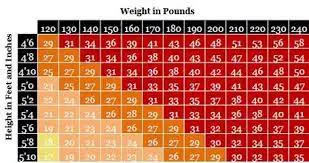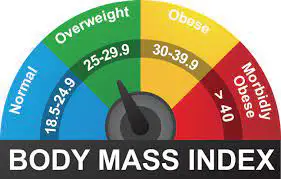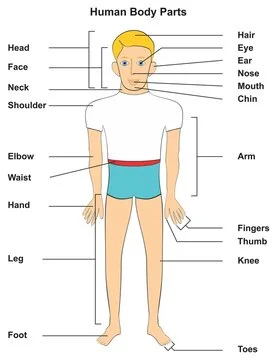Body Mass Index (BMI)
What is a Body Mass Index (BMI)?
Body Mass Index (BMI) is a widely used method for classifying individuals based on their body weight relative to their height. It is a simple and easily accessible tool that can provide a general indication of whether a person has a healthy body weight for their height.
The BMI formula is calculated by dividing an individual’s weight in kilograms by the square of their height in meters (BMI = weight (kg) / height (m)²). To Calculate BMI Click Here.
BMI does not diagnose a person’s body fatness or overall health; rather, it looks for weight categories that may be associated with health issues.
How Should I Interpret Data Regarding the Body Mass Index?
Concerning the Adult BMI
Details about BMI and how adults should interpret this figure.
Concerning BMI in Children and Teens
Details regarding BMI and how to interpret the BMI percentile for kids and teenagers.
Body mass index (BMI): what is it?
The body mass index, or BMI, is a medical screening tool that calculates your body fat percentage by dividing your height by your weight. Healthcare professionals use the formula weight in kilograms (kg) divided by height in meters squared (m2) to determine a patient’s BMI.
Although BMI generally indicates body fat (the higher the figure, the more body fat you may have), it isn’t always reliable. Health cannot be diagnosed by BMI alone. Healthcare professionals evaluate a patient’s health and dangers using their BMI as well as other instruments and tests.
Type 2 diabetes, heart disease, and stroke can all be brought on by high body fat. Low body fat may be associated with malnutrition. The proper quantity of body fat facilitates the body’s absorption of vitamins and minerals. In addition, it supplies your body with energy, aids in regulating body temperature, and shields your inside organs.
The typical BMI chart is not the appropriate tool for determining a child’s or teen’s weight. The ideal weight range for your child’s age and height should be discussed with their healthcare professional.
What is BMI used for?
BMI is a screening measure for specific health disorders and a diagnostic tool for weight types used by healthcare providers.
Making BMI-based weight-type diagnoses
Generally speaking, different weight types are classified by the following BMI ranges (in kg/m2):
Less than 18.5, in the optimal range of 18.5 to 24.9; overweight, between 25 and 29.9; class I obesity, between 30 and 34.9; class II obesity, between 35 and 39.9; and class III obesity, over 40.
It’s not just BMI that physicians use to categorize different weight categories. A few other tools are:
- Measuring the diameter of the waist.
- Using skinfold calipers, measure the thickness of the skin in certain body locations, such as beneath your shoulder blades and the back of your upper arms.
- Less often used techniques include air displacement plethysmography (ADP) and DEXA scans.
- using BMI to screen for health concerns
If your BMI is under 18.5, which is considered underweight, you may be more susceptible to the following conditions:
- Malnutrition.
- Anemia.
- weakened immune system, which may cause diseases and infections to occur more frequently.
- bone weakening.
- Unable to conceive.
- In order to assess your general health and determine whether you are malnourished, your healthcare practitioner may conduct certain blood tests and other tests if you are underweight.
Generally speaking, the below-given conditions are more likely to affect a person if the BMI is higher:
- Heart conditions.
- Elevated blood pressure, or hypertension.
- Diabetes type 2.
- Bile stones.
- Arthritic bone.
- Apnea in sleep.
- Several malignancies, such as those of the colon, breast, endometrium, and gallbladder.
- Depression and other ailments of the mind.
- It’s crucial to keep in mind that you could be suffering from any of the aforementioned illnesses without having a high BMI.
- Conversely, it is possible to have a high BMI without experiencing any of these symptoms.
- These disorders are mostly hereditary in nature, while there are other contributing factors as well, like cigarette smoking.
- Your doctor may request certain blood tests, such as a lipid panel and comprehensive metabolic panel, to examine your general health if your BMI indicates that you may be obese.
How is my BMI calculated?
You can use these steps to calculate your own BMI:

- Divide the weight of you in pounds by 703.
- Since one foot is equal to 12 inches, divide your response by your height in inches.
- Once more, divide that response by your height in inches.
- For instance, a 180-pound person who stands 5 feet 5 inches tall (65 inches total) would use the following formula to determine their BMI:
- 180 x 703 = 126,540.
- 126,540 / 65 = 1,946.769.
- 1,946.769 / 65 = 29.95.
- Their BMI would be 29.9.
What is an appropriate BMI?
It is generally accepted that a healthy BMI falls between 18.5 and 24.9.
It’s crucial to keep in mind that there are other factors that affect general health besides body fat. A number of additional factors impact your general health and your chance of acquiring specific medical diseases, including genetics, your level of activity, whether you smoke or use other tobacco products, whether you drink alcohol and mental health issues.
What are the BMI’s limitations?
There are a number of reasons why the conventional BMI chart is limited. This is why it’s crucial to avoid overemphasizing your BMI.
Healthcare professionals still use the BMI chart even though it may not be correct for some individuals since it is the most rapid way to determine an individual’s estimated body fat percentage. Constraints in diagnosing different weight types with BMI
When it comes to assessing weight types, the standard BMI has limitations that include:
- Lean body mass, or the weight of every component of your body except fat, is not distinguished by BMI from fat mass.
- As a result, an individual may be very low in fat mass and have a high BMI due to their muscularity, or vice versa.
- Even though adults AFAB often have higher body fat than adults AMAB, the same BMI chart is used for adults assigned female at birth (AFAB) and adults assigned male at birth (AMAB).
- The rising average adult height over time has not been taken into account in the BMI table.
It is not appropriate to use the normal BMI chart to determine the body fat percentage of the following populations:
- Both bodybuilders and athletes.
- Youngsters and adolescents.
- Pregnant individuals.
- Folks who are older than 65.
- Those whose illnesses cause them to atrophy (or waste) their muscles.
- Constraints with utilizing BMI as a health condition screening method
- There are several drawbacks to using the BMI as a screening tool to determine your risk of developing specific illnesses, like Type 2 diabetes and heart disease:
- The distribution and location of body fat are not measured by the BMI.
- This is a problem because accumulating excess fat in some parts of your body—like your belly or abdomen—raises your chance of developing certain health issues compared to accumulating excess fat in some parts of the body, such as the thighs.
- Factors like familial length (average lifespan), high blood pressure, diabetes, cardiovascular disease, and high cholesterol (dyslipidemia), as well as a family history of cancer, are sometimes overlooked in the association between BMI and death rate.
Relationship to health
- A 2005 study that was published in the Journal of the American Medical Association (JAMA) revealed that while underweight and obese people had a higher death rate, overweight people had a death rate that was comparable to normal-weight individuals as determined by BMI.
- The Lancet released a 2009 study that included 900,000 adults and revealed that individuals who were overweight or underweight had a greater mortality rate compared to those who were considered normal weight according to BMI. The range of 22.5–25 was determined to be the ideal BMI. Athletes have an average BMI of 23.6 for men and 22.4 for women.
- Only in those with elevated blood gamma-glutamyl transpeptidase levels is a high body mass index linked to type 2 diabetes.
- Patients with coronary artery disease who had normal BMIs were shown to be more at risk of dying from cardiovascular disease than those whose BMIs fell into the overweight range (BMI 25–29.9), according to an analysis of 40 research involving 250,000 people.
- According to one study, there is a strong overall association between BMI and body fat percentage. It also indicated that obesity is now the leading cause of death worldwide, surpassing smoking. However, it also points out that only 21% of men and 31% of women in the study met the BMI criteria for obesity, indicating that BMI was shown to underestimate the proportion of obese participants. In contrast, 50% of males and 62% of women met the BMI criteria for obesity.
- According to a 2010 study that tracked 11,000 participants for up to eight years, body mass index is not a reliable indicator of the risk of death, heart attack, or stroke. The waist-to-height ratio was determined to be a more accurate measurement. A 2011 study that tracked 60,000 individuals for up to 13 years discovered that the waist-hip ratio was a more accurate indicator of mortality from ischemic heart disease.
Restrictions
- The relationship between body fat percentage (BFP) and body mass index (BMI) for 8550 males using NCHS’s NHANES 1994 data is displayed in this graph. The lower right and higher left quadrants of the data point to the BMI’s limits.
- The statistics community and the medical community have both called attention to BMI’s shortcomings.
- Quetelet’s initial sample techniques contributed to some of the BMI scale’s statistical shortcomings. As mentioned in his main work, A Treatise on Man and the Development of His Faculties, Quetelet used primarily Scottish Highland warriors’ and French Gendarmerie’s data to create his formula.
- The BMI was initially created as a measure for men in Europe. The scale is frequently skewed toward women and those who are not of European descent. Sociologist Sabrina Strings has observed that the BMI is disproportionately erroneous for Black people, classifying them as overweight even in cases when they are not.
Scaling
- In the denominator of the BMI formula, the exponent is arbitrary. The square of one’s height and weight determines one’s BMI. Taller people have higher BMIs than shorter people with the exact same body form and relative composition because mass grows to the third power of linear dimensions.
- The BMI is inversely correlated with the square of height and proportional to mass. Therefore, BMI doubles rather than stays the same if all body dimensions double and mass scales naturally with the cube of height. Because of this, the reported BMIs of taller individuals are typically higher than their actual body fat percentages.
- The Ponderal index, on the other hand, is predicated on the natural scaling of mass to the third power of height.
- Nonetheless, a large number of taller persons have smaller frames relative to their height and are not simply “scaled-up” versions of shorter people.
- Carl Lavie has stated that “The B.M.I. tables are greater for knowing obesity and body fat in large populations, but they are far less reliable for determining fatness in individuals.”
- Exponent estimates for US adults range from 1.45 to 1.95 for females and from 1.92 to 1.96 for men.
Physical characteristics
- For a large (or tall) frame, the BMI overestimates by around 10%, while for a smaller frame (short stature), it underestimates by about 10%. Put differently, individuals with smaller frames may be carrying more fat than is ideal, but their BMI suggests that they are within the normal range.
- On the other hand, people who have a large frame (or are tall) and a low body fat percentage may nevertheless be considered overweight based on their BMI.
- A height/weight chart, for instance, would state that 68 kilograms (150 lb) is the optimal weight (BMI 21.5) for a guy who is 1.78 meters (5 feet 10 inches) tall. However, if the man is tiny in stature, he can be overweight at 68 kg or 150 lb and has to drop to about 61 kg or 135 lb (BMI 19.4).
- Conversely, the man with the bigger frame and stronger physique should gain 10% more weight, or about 75 kg or 165 lb (BMI 23.7). It is advisable to utilize common sense when determining one’s optimal weight if they are on the borderline between small and medium or medium and giant.
- Still, waist-to-height ratio and real body fat percentage are more reliable indicators of health risk factors than being within one’s optimal weight range for height and build.
- Precise frame size calculators employ multiple measures (e.g., neck circumference, elbow width, wrist circumference) to ascertain an individual’s category for a particular height.
- Additionally, the BMI does not account for the loss of height that comes with aging. In this case, weight will not grow in tandem with an increase in BMI.
Fat versus muscle
- It is inaccurate to make assumptions about how muscle and fat mass are distributed. In general, BMI undervalues excess obesity in those with fatter body masses and overestimates it in people with leaner body masses (such as athletes).
- omero-Corral et al. conducted a study in June 2008 using 13,601 participants from the third National Health and Nutrition Examination Survey (NHANES III) in the United States. The study indicated that 21% of men and 31% of women had BMI-defined obesity (BMI > 30).
- Obesity as defined by body fat was present in 62% of women and 50% of men. BMI demonstrated low sensitivity (36% for men and 49% for women), although having excellent specificity (95% for men and 99% for women) when it came to obesity as defined by BMI.
- Put another way, the BMI will generally be accurate in identifying a person as fat but may not always be accurate in identifying a person as not being obese.
- BMI levels in the intermediate range of 20–30 were found to be connected with a wide variety of body fat percentages, despite the fact that BMI undercounts obesity.
- Between 20% and 10% of males with a BMI of 25 have body fat percentages below 20% and beyond 30%, respectively.
- Measures of body fat, as ascertained by methods like skinfold measurements or underwater weighing, are frequently a better way to determine body composition for athletes.
- The limitations of manual measurement have also given rise to new, alternative methods of measuring obesity, such as the body volume indicator.
Differences in classification definitions
- Where to draw the line between overweight and obese on the BMI scale is unclear. As a result, throughout the previous few decades, the norms have changed.
- The U.S. Dietary Guidelines classified overweight at several BMI ranges, from 24.9 to 27.1, between 1980 and 2000. A consensus conference held by the National Institutes of Health (NIH) in 1985 suggested that the overweight BMI be established at 27.3 for women and 27.8 for men.
- A BMI over 25 is considered overweight, while a BMI over 30 is considered obese, according to an NIH report from 1998. The World Health Organization (WHO) established the 1990s guidelines, with a BMI of 25 to 30 being considered overweight and a BMI of 30 or above being obese.
- This ended up being the gold standard for figuring out if someone is overweight.
- It has been demonstrated that the existing WHO and NIH ranges of normal weights are linked to lower risks of certain diseases, including type II diabetes; nevertheless, applying the same
- BMI range for men and women is deemed arbitrary, rendering the definition of underweight highly inappropriate for men.
- According to one study, the vast majority of persons classified as “overweight” or “obese” under existing standards do not actually suffer a significantly elevated risk of dying young.
- The lowest death rates were discovered for those with BMIs between 23 and 29, with the majority of the 25–30 range termed ‘overweight’ not being associated with higher risk, according to a quantitative review of many studies encompassing over 600,000 men and women.
Other Options
Index of corpulence (exponent of 3)
Rather than using a 2 exponent, the corpulence index utilizes a 3. One issue with BMI is that the corpulence index produces accurate results even for very tall and very short individuals. A person who is 152.4 cm (5 feet 0 inches) tall and weighs 48 kg (106 lb) optimally would have a normal BMI of 20.74 and CI of 13.6. In contrast, a person who is 200 cm (6 feet 7 inches) tall and weighs 100 kg (220 lb) has a BMI of 24.84, which is extremely close to an overweight BMI of 25, and a CI of 12.4, which is extremely close to a normal CI of 12.
Waist measurement
- Waist-to-hip ratio and waist-to-height ratio are the main articles.
- Visceral fat is a good indication of waist size and carries greater health hazards than other types of fat.
- The National Institutes of Health (NIH) in the United States states that a waist circumference greater than 1,020 mm (40 in) for males and 880 mm (35 in) for women (who are not pregnant) indicates a higher risk of type 2 diabetes, dyslipidemia, hypertension, and cardiovascular disease (CVD). Compared to BMI, waist circumference may be a more accurate measure of the risk of obesity-related diseases.
- This is the case, for instance, with older individuals and populations of Asian heritage. There is a “higher risk” at 940 mm (37 in) for men and 800 mm (31 in) for women; the NIH statistics are “even higher.”
FAQ
Which BMI is appropriate for my age?
If you weigh less than 18.5, you may be very underweight and malnourished. You have a healthy weight range for young and middle-aged adults: 18.5 to 24.9. Your weight ranges from 25.0 to 29.9. If you are over 30, you are fat.
Is 24 a healthy BMI?
When it’s less than 18.5, you’re underweight. You fall within the healthy weight range of 18.5 to 24.9. If your weight is in the range of 25 to 29.9, you are overweight. If you’re 30 or older, you’re considered obese.
How can I figure out my optimal weight?
Revised Formulas for Optimal Weight
BMI + (BMI divided by 5) x (Height in inches minus 60) equals weight in pounds.
Height in meters minus 1.5 x (2.2 x BMI + (3.5 x BMI) x Weight in kilos
Ways to put on weight?
If you are underweight, what is a decent approach to put on weight?
consuming food more often. Gradually start consuming five to six smaller meals throughout the day.
selecting foods high in nutrients.
Finish it off.
Try shakes and smoothies.
However, be mindful of what you drink and when.
Get moving.
References
Body mass index (BMI). (2022, June 3). Centers for Disease Control and Prevention. https://www.cdc.gov/healthyweight/assessing/bmi/index.html
Professional, C. C. M. (n.d.-b). Body mass index (BMI). Cleveland Clinic. https://my.clevelandclinic.org/health/articles/9464-body-mass-index-bmi
Wikipedia contributors. (2001, December 11). Body mass index. Wikipedia. https://en.wikipedia.org/wiki/Body_mass_index








12 Comments